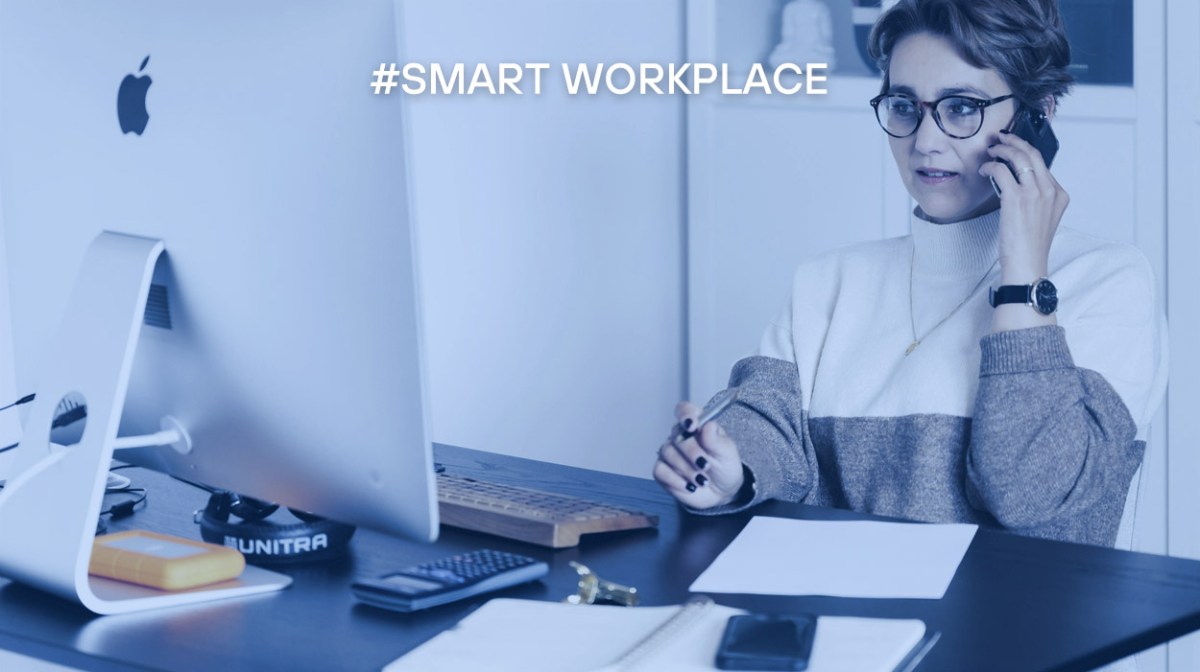What is the Smart Workplace?
Telefónica’s Smart Workplace is much more than a set of technological tools: it is a living ecosystem that accompanies people in their daily lives, wherever they work. Our goal is for every employee to feel that their workplace ‘understands’ them, adapts to them, and makes their lives easier.
It is about transforming work into a seamless and human digital experience, in which technology becomes an invisible ally.
What are its main features?
The smart workplace is based on three essential pillars: flexibility to work from anywhere with the same security and quality of experience; simplicity, which allows tools to be unified, processes to be automated and technological friction to be reduced; and personalisation, where each person has an environment adapted to their way of working thanks to artificial intelligence and observability.
In short, it is an end-to-end service model that combines devices, connectivity, support and collaboration, supported by innovative technologies such as AI, automation and environment observability to anticipate potential incidents. All of this is integrated into a single proposal aimed at transforming the employee experience.
What role has the development of new technologies played?
The development of new technologies has been the driving force behind the transformation of the traditional workplace into an intelligent, proactive and highly efficient ecosystem. In Telefónica’s Smart Workplace All in One model, automation allows incidents, requests and configurations to be resolved autonomously, freeing up time and resources for higher value tasks.
Generative AI not only responds, but also detects, prevents and proposes solutions in real time, enriching the continuous improvement of the service and personalising the employee experience. For its part, proactive monitoring — or observability layer — makes it possible to anticipate problems before they become incidents, ensuring service availability and improving customer service.
Where can AI take us?
With the evolution of artificial intelligence, the Smart Workplace model is integrating AI into every phase of the value chain: from employee care to incident resolution to continuous service improvement. This integration is not only functional but also strategic, as we monitor AI behaviour to ensure its effectiveness, security and alignment with business objectives.
We are moving towards a new generation of intelligent agents that amplify workplace capabilities. Of particular note is the AI Manager, an analysis layer that allows service managers to make operational and strategic decisions based on real data, cross-referencing incident information, device status, surveys and technical performance, and responding in natural language. Alongside it, on-site AI offers personalised attention in the employee’s physical environment, and proactive AI anticipates problems through advanced observability, automating responses and proposing improvements before incidents arise.
This approach turns the workplace into a living platform, capable of learning, adapting and evolving, boosting productivity and transforming the employee experience.
What are the benefits for businesses?
For businesses, this means a clear improvement in productivity, a reduction in operating costs and greater agility in support and technology management. It also allows the employee experience to be measured as another KPI, facilitating continuous improvement and strategic decision-making based on real data.
And for the people who work there?
For individuals, the Smart Workplace provides autonomy, fewer interruptions, tools tailored to their needs, and a much richer and more personalised work experience. The result is an environment where every employee feels supported, empowered and able to add greater value.
What examples are there?
The incorporation of GenIA into the Smart Workplace model has led to significant improvements in key operational indicators. Thanks to automation and the more than 40 functions implemented, there has been a notable reduction in the volume of tickets handled by support teams.
In addition, the number of interactions required to resolve each case has decreased, as AI is able to identify the source of the problem and resolve it on first contact, without the need for unnecessary escalations. This efficiency also translates into a clear improvement in the user experience, with a Net Promoter Score (NPS) of 87% and more than half of users choosing GenIA as their preferred service channel.
These results consolidate the value of artificial intelligence as a driver of workplace transformation and are reinforced by the integration of voice into the All in One proposal, which allows communications, support and productivity to be unified in a single comprehensive solution.
How is the smart workplace impacting Human Resources models and talent management?
The Smart Workplace All in One solution has a direct impact on Human Resources models by improving productivity, facilitating talent retention and accelerating technology adoption. Thanks to the artificial intelligence integrated into each phase of the service, employees have more efficient, personalised and proactive digital environments, which translates into a more satisfying work experience and less operational friction.
This proposal also reinforces change management, accompanying people in the transition to new, more flexible and collaborative ways of working. By integrating voice as part of the service, it completes a comprehensive solution that unifies communications, support and tools into a single experience, aligned with the needs of the business and its people.









